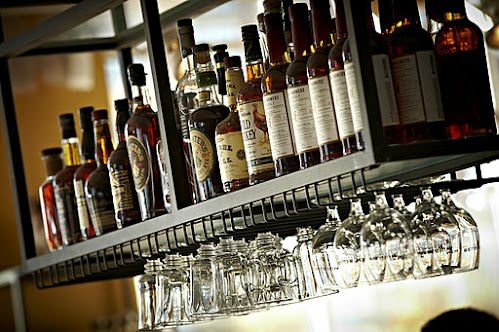With the ever-growing popularity of specialty cocktail menus and a push for more creativity behind the bar, restaurant and bar guests are seeking out unique bar concepts and services. If your restaurant, cafe, lounge or eatery has a defined bar area, there are some key steps to create the right stock list of spirits, elixirs, cordials, and other specialty types of liquors that can help your bar and your restaurant business flourish.
As the bar is often the first place guests gather and/or wait for a table, it’s important to make their first impression and interaction a great one. So, steer clear of anything that’s not an inviting, well-designed, well-kept designated area that reflects dedication to giving guests an amazing bar experience.
To learn how to achieve higher sales and increase the appeal of your bar offerings with a smartly stocked bar, we turned to Molly Horn, Head Bartender at Farmers Fishers Bakers, for some guidelines and tips that will help showcase products and put your bar menu in a whole new light.
The Spirits. These are the superstars of the bar. There are six great base spirits that are a must, says Molly: vodka, gin, rum, tequila, bourbon, and rye. Pair these with high quality modifiers and elixirs, such as Curaçao or triple sec, to enhance the flavor of the spirit. Aperitifs should also be on hand, such as Aperol and Campari; include digestifs, such as a good ruby port and a quality cognac; and don’t forget about classic cordials, such as Crème de Violette, Allspice Dram, Maraschino, and Domaine de Canton.
The Classics. These are the foundations of any good, worthwhile bar menu. Rooted in standard spirits, simple ingredients, and traditional techniques, classic cocktails and the proper technique yield better results than having a large menu or list of disparate, confounding drinks or cocktails with complicated techniques or labor-intensive preparations. Molly suggests a head bartender have a masterful knowledge and the ability to create classics such as a Manhattan, Old-Fashioned, Martini, and Sazerac. Guests will order them!
The Glassware. Drinking a perfectly executed Manhattan out of a water glass won’t ruin it, but it will certainly diminish the experience and the intended presentation that the recipe should call for. Molly recommends four valuable glassware categories to help elevate cocktails from good to great: the champagne coupe (she recommends the Leopold Coupe), the single old fashioned, the double old fashioned, and the Collins glass.
The Tools & Accessories. The accouterments are just as important in achieving an amazing bar experience as the cocktails themselves and are essential for skillful preparation. Molly recommends starting with a jigger, as this small, nimble measuring tool is crucial to creating a consistent cocktail that matches a recipe. Then, add a nice long stirring spoon, a set of metal-on-metal shaker tins (these tend to last longer/are safer in high-volume environments than their glass-on-metal counterparts), a Hawthorne strainer (fits over top of shaker tin), a julep strainer (to strain stirred drinks), and a small garnish knife. Lastly, ice cubes (try a 2”x2” tray mold) are a vital ingredient for stirring, shaking, and serving cocktails with flair and effect. Also, great garnishes are a must. Keep items like fresh lemons/limes, good granulated or powdered sugar, and flavoring agents, such as fresh mint and raw ginger, on hand at all times.
The References. Finally, a well-stocked bar should include some great reference guides, so Molly suggests having these books on hand: the timeless Harry Craddock’s The Savoy Cocktail Book and Jim Meehan’s The PDT Cocktail Book: The Complete Bartender’s Guide from the Celebrated Speakeasy.

